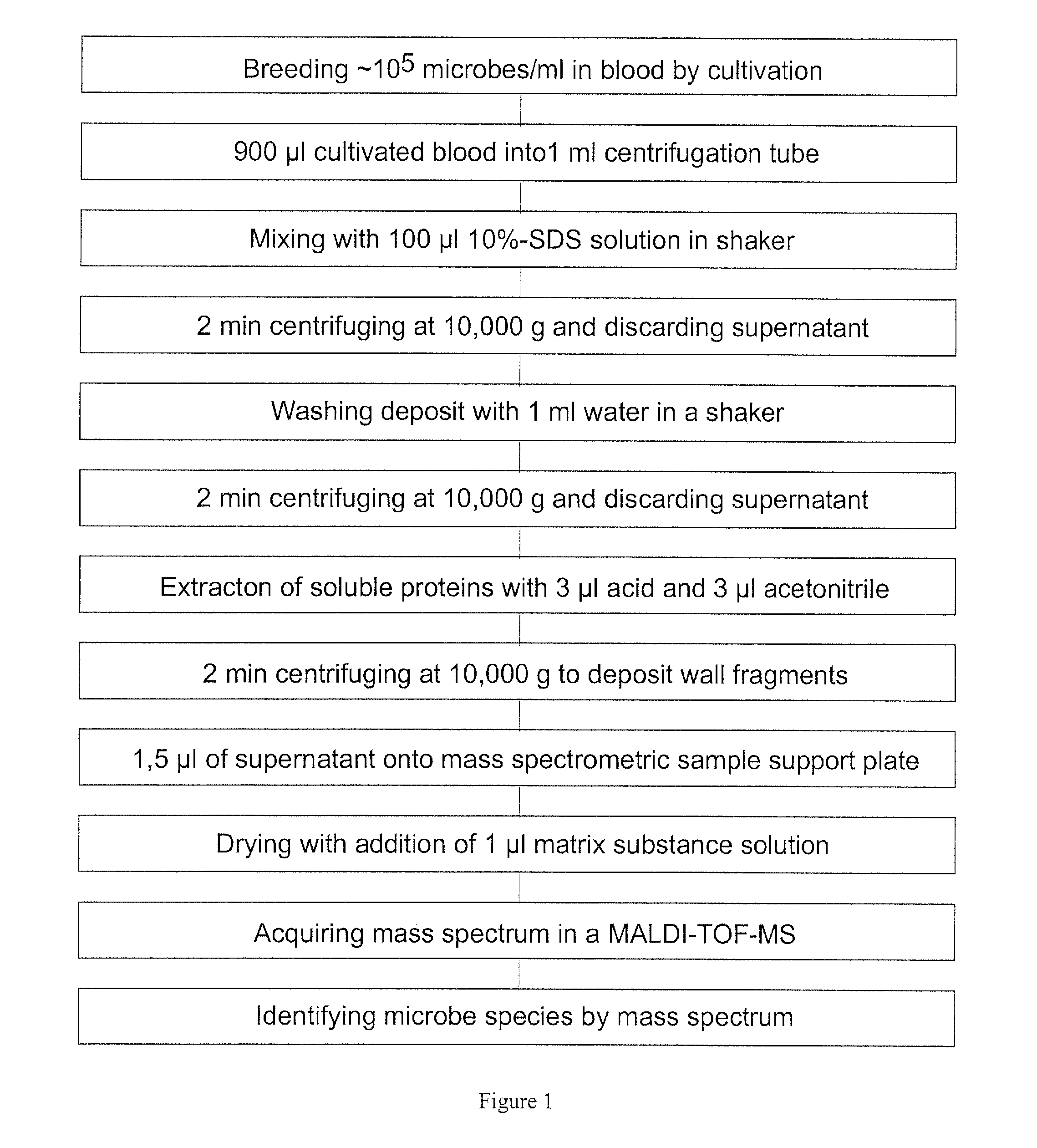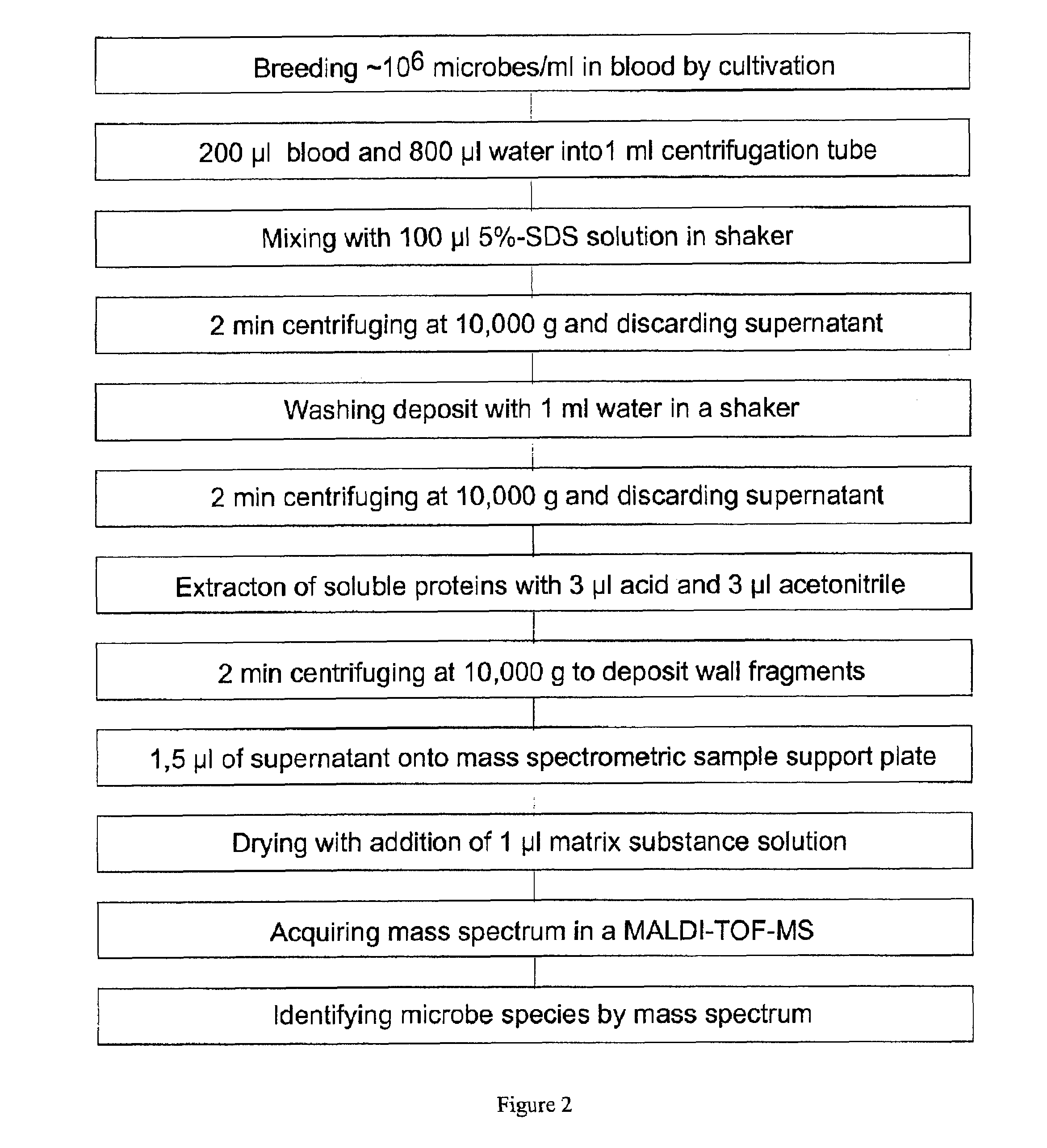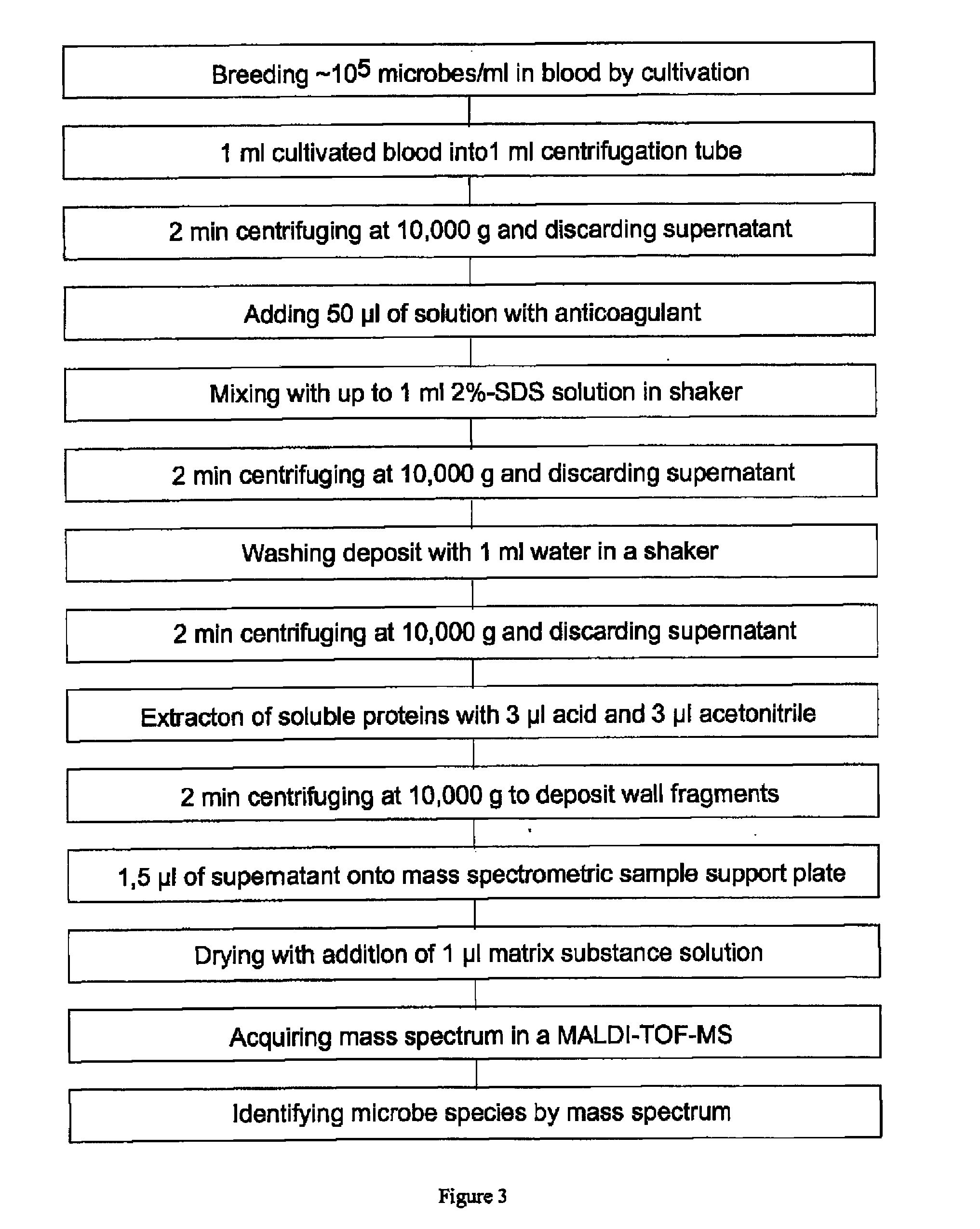Mass spectrometric diagnosis of septicemia
a mass spectrometric and septicemia technology, applied in the field of mass spectrometric identification of pathogens, can solve the problems of increasing the ion yield, increasing the instability of detection, and worse detection sensitivity
- Summary
- Abstract
- Description
- Claims
- Application Information
AI Technical Summary
Benefits of technology
Problems solved by technology
Method used
Image
Examples
Embodiment Construction
[0037]The preferred embodiments described below are based on blood samples which have a sufficiently high concentration of microbes with more than about 104 microbes per milliliter. Only in extremely rare cases, this can be the delivered blood in the original state if the physician communicates an extremely acute infection; normally the method relates to the blood from a cultivation of several hours to a few days in appropriate blood cultivation flasks which are commercially available. The specialist knows, that the cultivation usually is performed for pairs of blood samples in pairs of blood cultivation flasks, one for aerobic microbes and one for anaerobic microbes. The flasks already contain anticoagulants and nutrients; after adding the blood they are incubated it in an incubator at 37° Celsius. In addition, the blood cultivation flasks already contain inhibitors or adsorption material for most antibiotics. Even if an immediate identification from the original blood is attempted...
PUM
| Property | Measurement | Unit |
|---|---|---|
| mass | aaaaa | aaaaa |
| mass | aaaaa | aaaaa |
| mass | aaaaa | aaaaa |
Abstract
Description
Claims
Application Information
 Login to View More
Login to View More - R&D
- Intellectual Property
- Life Sciences
- Materials
- Tech Scout
- Unparalleled Data Quality
- Higher Quality Content
- 60% Fewer Hallucinations
Browse by: Latest US Patents, China's latest patents, Technical Efficacy Thesaurus, Application Domain, Technology Topic, Popular Technical Reports.
© 2025 PatSnap. All rights reserved.Legal|Privacy policy|Modern Slavery Act Transparency Statement|Sitemap|About US| Contact US: help@patsnap.com



